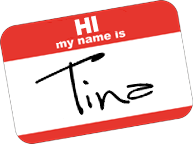Coping with Cravings
Learning to manage cravings – urges and temptations to use – is an important part of trigger management. Triggers are both external, such as invitations to use, and internal, such as cravings. Cravings are part of reducing use and withdrawal and are also commonly experienced when reducing drug use. Indulging cravings can begin a new cycle of problem use.
Learning how to manage cravings takes practice and commitment, as you are building new neural pathways. It can be helpful to remember some facts about cravings. Check out Distress Tolerance page for more information about Cravings, and for ideas in coping with the. Know that they do not last forever and that over time, they decrease in frequency and intensity.
Develop A Trigger Management Plan
We can reduce cravings (inner triggers) by managing temptations to use – external triggers. We suggest you create a coping plan for Trigger Management and Coping for Cravings. Focus on a higher intensity situations, so you can apply it to all situations. Imagine that a situation in which you are highly tempted to use. Answer the following questions in as much detail as possible.
- What are some things you can do to distract yourself?
- How can you place cues and prompts in your vicinity, so that these distractions so they are on-hand when you are most likely to be tempted to use?
- What positive self-talk and affirmations can you give yourself?
- Who can help you set up and reinforce these cues and prompts?
- What can you do if you slip, so that you can get back on track with your goals, and not get into a cycle of problem using all over again?
Keep your responses, and put them somewhere you can see them regularly. Refer to them and update regularly. This is your plan. You can go through the same process to develop plans for other high risk situations, but for now focus on just one.
Suggested Strategies
Strategies for Trigger Management fall into 2 categories: Actions, things we do, and Thoughts, things we think, say to and write about ourselves. Both Actions and Thoughts are helpful and reinforce our efforts. The best results are achieved when both types of interventions are combined. The following strategies for Trigger Management and Coping with Cravings have worked well for guys moving away from problem Tina use.
Actions:
- Distract yourself. Do something unrelated to Tina sex while urges pass
- Self-Monitor: journal your thoughts and feelings as they happen. This reduces intensity of cravings, and increases rational detachment
- Call someone, or strike up a conversation with someone to shift our focus
- Physical exercise can help diminish cravings and generate good-feeling endorphins
- Brainstorm a list of enjoyable activities you can do that are genuinely enjoyable. Pick the ones that will be easiest for you to join, and start scheduling them.
- Plan social activities at the same time you know you will be most triggered to score or use
- Deep breathing. Take slow, full, breaths (in through your nose, out through your mouth) to relax. We can’t be anxious and relaxed at the same time.
- Delay the response. Put off the decision to use for 15 minutes.
Thoughts:
- Normalize the craving: ‘I am experiencing an urge to use and that’s ok. Urges crest and pass. “This too shall pass.”
- Guided Imagery. Some guys find that imagining the craving as a wave that rises and falls, and that they are riding out the wave knowing and predicting that it will subside.
- Speak and write out positive reinforcement:, ‘I can cope with this,’ and ‘I haven’t used for 2 weeks and I don’t want to spoil it now,’ can be helpful.
- Play the tape forward: Think or write out the negative consequences of using. Make a list or review one you already have made. Think or write out the benefits of not using. Make a list or refer to one you have already made for that as well.
To learn more about triggers and cravings” check out this video clip:


